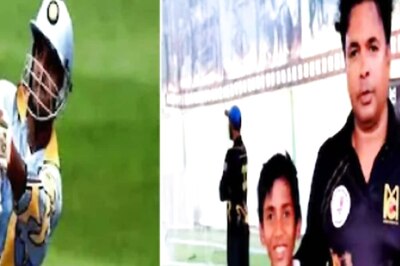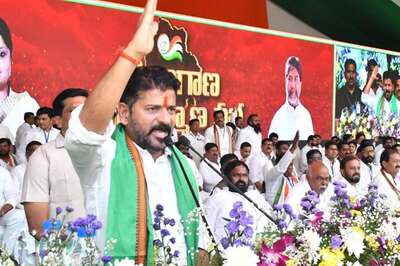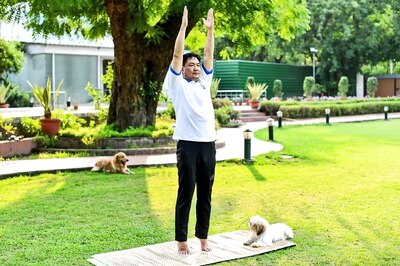Tiptoeing Around China’s Control of Indian Territory Won’t Make Problem Go Away, Writes Lt Gen Hooda

views
The standoff in Eastern Ladakh is now entering the third month and shows little signs of an early resolution. However, there has been a slight dampening of the noisy debates on television, and the crisis is going off the front pages of newspapers. Perhaps, this is the time to do a sober analysis of the situation and suggest a way forward.
I must admit that I have no access to any additional information, and I am basing my analysis on what is available in open source. The only advantage I enjoy is a greater understanding of the geography and some historical knowledge of how the army has been managing the Line of Actual Control (LAC), particularly in Ladakh.
Briefly, what we know is this: the People's Liberation Army (PLA), in a planned operation involving thousands of soldiers, has activated the LAC in Eastern Ladakh. In at least two areas, the North bank of Pangong Tso and the Depsang Plains, the PLA has crossed the Indian LAC and established a permanent presence. At Galwan Valley, the PLA is attempting to gain a tactical advantage that enables it to overlook the vital road leading up to Daulat Beg Oldi and the Karakoram Pass.
The LAC is a de facto border that separates Indian-controlled areas from those that are Chinese-controlled. There are a few areas where the Indian perception of the LAC differs from the Chinese interpretation (Pangong Tso and Depsang are two such locations). In these areas, there was an understanding that both sides would patrol up to their own perception, and neither side would establish a permanent presence in these pockets. Thus, both sides could keep their claims alive.
By physically intruding into the areas of Pangong Tso and Depsang, the Chinese have blocked the movement of India patrols up to their traditional patrol points. In effect, this has shifted the Chinese control westward and into what we consider Indian territory.
The importance of patrolling up to the LAC was also highlighted by India’s ambassador to China, Vikram Misri. He said: “The resolution of this issue is quite straight forward from our perspective. The Chinese side needs to stop creating obstruction and hindrances in the normal patrolling patterns of the Indian troops”.
To resolve this standoff, India has chosen to adopt the negotiation route, at least for the present. This is the correct approach as neither side wants the situation to escalate to a military conflict. It is also going to be a long and arduous path, as many experts within and outside the government have pointed out. In this period, our negotiating stance must show greater clarity than has been displayed until now.
It is a little surprising to see some members of the strategic community, including military officers, invoking the term ‘disputed area’ and ‘grey zone’ for the north bank of Pangong Tso. This somehow conveys the impression that there is some justification for the PLA's actions as the area is disputed.
The Chinese may have a differing perception, but India’s maps have a clearly marked LAC that passes through Finger 8, and any violation of this line should be unacceptable to us. There should be no arguments that weaken our military position on the LAC.
We also see numerous comments that India has been regularly losing territory to China in Ladakh. These unsubstantiated allegations do grave injustice to the army and ITBP troops who have been resolute in protecting and defending the LAC in Ladakh, irrespective of which government is in power. They also deflect attention from current Chinese actions in Ladakh.
Contrast our statements with those coming from China’s Ministry of Foreign Affairs that blame Indian soldiers for crossing the LAC and committing acts that are “of a vile nature and have serious consequences.” Even as we hesitate to admit the PLA’s presence in our territory, the Chinese lay unsubstantiated claims to the complete Galwan Valley.
In international politics, deterring an adversary depends a lot on how we convey our intentions. Thomas C. Schelling writes in his classic work Arms and Influence, “It is a tradition in military planning to attend to an enemy’s capabilities, not his intentions. Bur deterrence is about intentions - not just estimating enemy intentions but influencing them. The hardest part is communicating our own intentions.”
Tiptoeing around the problem will not make it go away. Let us communicate our firm national resolve to the Chinese government. The PLA has taken a tremendous risk by destroying the carefully constructed agreements and protocols that have ensured peace along the LAC. It is for them to step back, and for us to show them the dangers of not doing so. The banning of Chinese apps is just one step in this process.
Deterrence and compellance are efforts to shape the perceptions of the adversary. We should not underplay the seriousness of the current situation as it could convey the impression of a defensive attitude and weaken our credibility. We must clearly proclaim that we are unwilling to step back from our demand for restoration of status quo ante.
It is generally felt that retention of the initiative is a crucial factor for victory. Sometimes, when dealing with a strong adversary, it is a good strategy to show that you have burned the bridges behind you and the initiative to escalate, and its associated costs, have passed on to the adversary. This will require a strong commitment of intent from our side.
It is also the time to show political solidarity. It is distressing to see personal attacks on political leaders, both ruling and in opposition, at a time when we should be focused on an external rival. If our politicians speak in one voice, this would be the loudest message to China. The fight has to move beyond television studios to the real world.




















Comments
0 comment